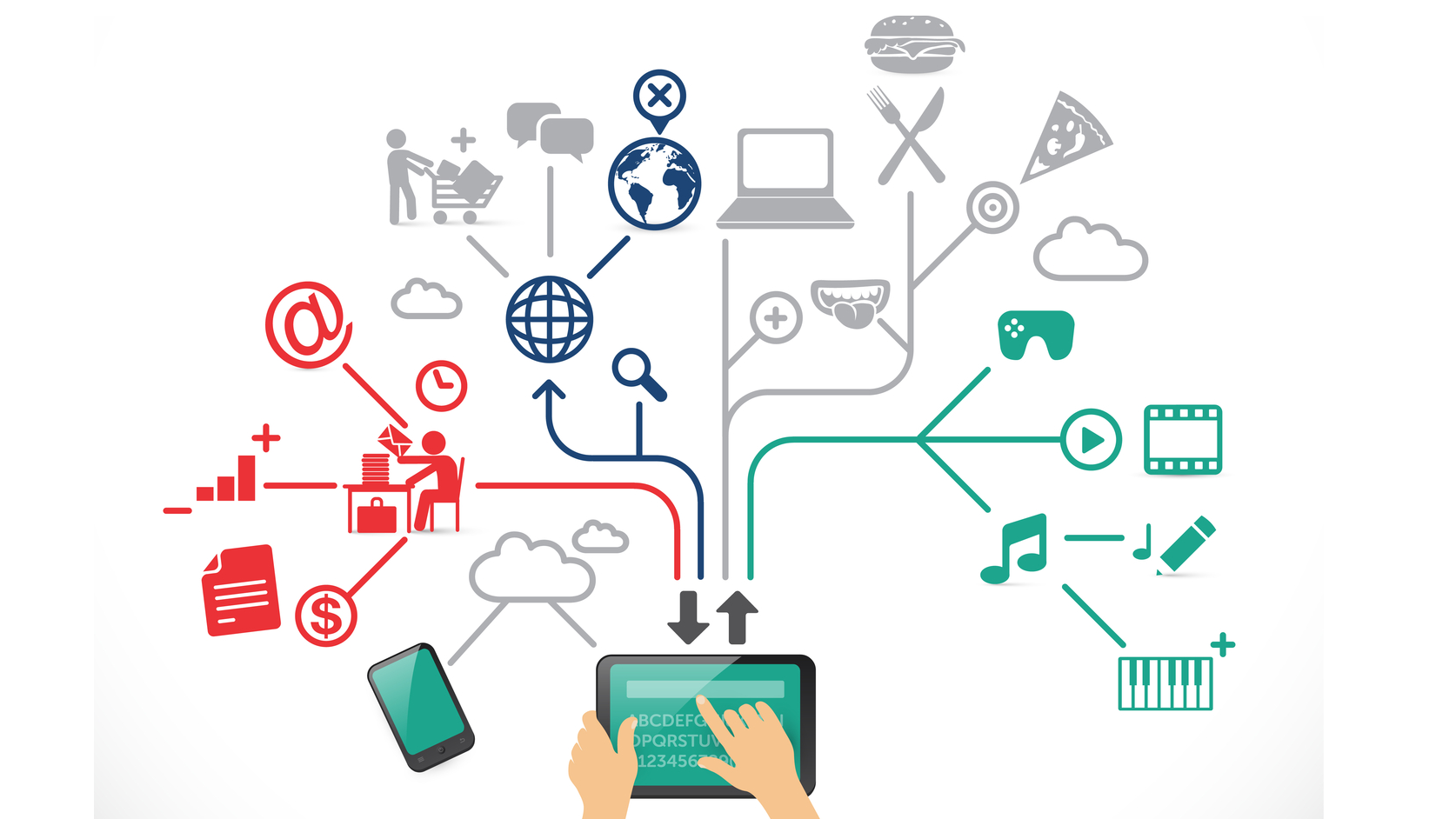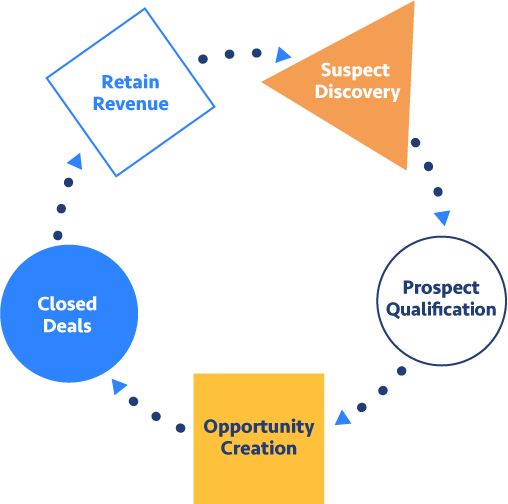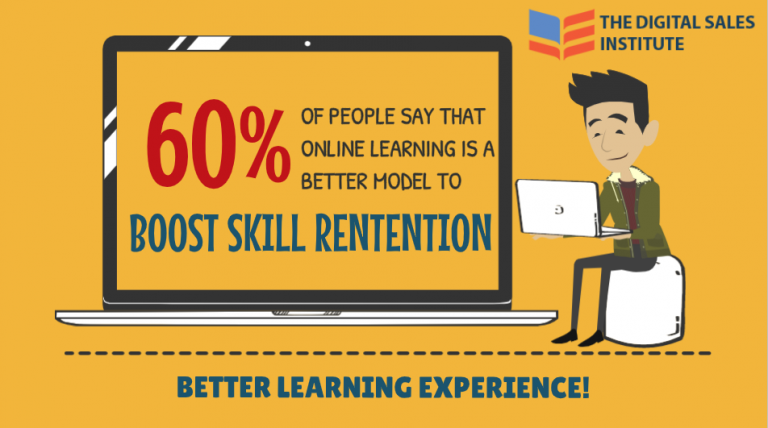Today digital sales as the main route to customer engagement is growing rapidly. Remote working, data, technology, and buyer preferences are some of the things driving this change. While digital in the sales process is exciting, it can also prove to be a hurdle in how sales leadership map out a sales growth strategy to encompass this new reality. The carrot is that digital is a game changer for sales organizations that embrace it.
Research shows that organizations who champion digital channels in their sales programs are growing by a factor of 5 over their competitors and have almost a third better customer acquisition results. To win in digital sales, leadership will have to rethink the use of traditional selling channels alongside reviewing the customer experience across every touch point for the buyer and the salesperson. These digital implications are now critical in how any sales organization goes to market. Add into the mix that analytics, AI, and machine learning are core elements for the entire sales operation the need for an organization to target, predict, and prioritize customer interactions. A sales model driven by speed, effectiveness, and flexibility will be the new frontiers of sales.
Understanding Digital Sales
It can be difficult for sales leaders to understand what they actually need to do in the digital first era, especially when there can be internal dialog on the human against digital debates. However, one thing is certain, that digital sales is what will power the sales engine for years to come. However, there is also another piece to this story, survey after survey shows that what customers really crave for is great digital experiences alongside the live person interaction. In fact, you may like to know that companies who add a live human touch to their digital sales tactics consistently outperform their competitors. In fact, they deliver five times more revenue and nearly eight times more annual profits.
There is no one size fits all plan when it comes to digital interactions, every organization must create the person to digital ratio that is most relevant for their sales model and their customer set. This requires a planned approach to evaluate and optimize the person to digital interactions. Remember that most B2B customers want both the personal human and digital touch points at specific stages along their buying journey.
Sales channels have morphed
It doesn’t seem all that long ago that the B2B salesperson had the one channel to interact with their customer base. Whether that was phoned based, field based, or they sold via channel resellers. Then as the business became more attuned to customer potential, they would have segmented their customers and assigned them to a nominated sales channel.
While the internet tore up the rule book on sales, the pandemic rewrote the entire sales playbook on how any company or salesperson will do business in the future. Today, prospects and customers have multiple channels available to them. We have gone from single channel to multichannel and on to omnichannel, the multi touch point” selling environment. The modern buyer doesn’t care about segmentation, they expect to engage with companies on their channel of choice, when it suits them or depending on where they are in their buying journey.
Despite the impact of digital sales almost sixty six percent of buyers still want that human interaction. The key is maximizing this is as the buyer moves into the evaluation or consideration phase, is to blend digital tools for comparison or configuration with highly skilled salespeople. Digital sales should power most cross sells, upsells and renewals, as those buyers who want human interaction, move prefer to self-serve – over 85% of buyers in fact (Gartner).
This poses a sales organization question, what degree should salespeople be deployed in retaining customers rather spending effort uncovering new customer needs or generating new revenue streams. Again, research shows that this is where buyers really want sales expertise.
A key takeaway for any sales organization is that planned touch points overrides customer type or industry segments. Any business that is digital only today could be higher revenue by planning in that human touch. On the flip side, any company over investing in account managers should note that buyers are saying quite clearly that they do not value the personal attention after the sale as you may like to believe.

The Digital Sales World Customers
The digital sales world customers want a great digital experience alongside a great human experience. One point to note is that while they want great experiences they do not want to be bombarded with emails and calls. Business needs to avoid the temptation to overdo the contacts. The key to unlocking great experiences is to plot where in the customer’s journey that human interaction is most valued and then map this to the internal sales process.
This could be online chat, video calls or phone calls (inbound or outbound availability). While it is a given that most brands or companies will have to invest in a digital strategy, these investments should mainly focus on two areas. The first is where digital enablement is most valued by the customer to make buying easier such as pricing, self-service information, configuration, comparisons, and other online tools. The second area is about how digital sales enablement can enable salespeople to add real value when it comes to interacting with the customer when that live person touch point is expected.
Salespeople still have an important role to play in the customers buying journey as many B2B customers still want that live person communication at some stage. Sales organizations need to offer customers multiple touch points with both human and digital options always available at any given stage with some degree of value. One challenge can be using technology or systems to transition handoffs at the optimum time without disengaging the customer. The implications today for sales teams are substantial. The modern salesperson needs to focus their efforts on product or market expertise, on value added consultative selling, and the ability to respond quickly to requests. How salespeople are rewarded or deployed could have to change especially if their role to just to facilitate purchases. The sales model and sales structure will keep evolving to keep pace with the digital world.
The Digital Age of Agility
Digital means no country boundaries, no ideal time always on, always connected and always available. Today, 24 hours can be a long time for a customer to wait for a reply or an interaction, even for B2B buyers. Many companies will have to plan for following the sun 24-hour expertise available to any customer who seeks it. Sales and subject matter experts who can answer questions in real time and skilled in using an array of digital sales tools to bring great experiences to customers interactions. We know that most of the buyers journey is conducted without ever needing to talk with a salesperson. Buyers self-educate by conducting research online but depending on the complexity of the product there comes a moment when they need a question answered quickly. The channel of choice is the customers whether than is web chat, email, or via contact with a live person.
Yet many B2B companies still have to implement a real digital sales strategy never mind reorganize their sales force to account for the rapid change in buyer preferences and what they value. The old traditional sales channels and sales tactics need to be updated and a sales team that bring real value and expertise needs to be installed.
Larger B2B purchases are now transacted online and once a buyer has committed to buying, they expect ease, speed, and convenience. The expectation of instant quotes, final pricing proposals, delivery options etc in the B2B world is becoming very similar to consumer expectations. They also want trouble shooting, queries and support to be almost instant. The whole mantra of “make buying easier” is now a real factor.

Digital Sales Transparency
The age of business transparency is upon us. Buyers want to know roadmaps, delivery times, pricing, future plan, and any hidden costs to doing business. Now there is a whole range of digital tools that make product comparisons and pricing transparency easy and can be used both by the customer and the salesperson interacting with their customers. This builds on blending the person and digital experience. In low cost, familiar purchasing buyers can get access to online for pricing, upgrades, additional licences or use a pricing configurator to review comparison options.
Digital Experts in The Sales Process
Every salesperson and account manager now needs to be digital sales experts in order to deliver those moments of magic to their customers. They need sales training and become skilled at using an array of digital tools to help them provide this experience to their customers.
Selling at its core is about conversations and commitments. So, the sales conversations in the sales process must deliver a high level of personalization. Then the use of digital tools should allow the creating of quotes, specifications, pricing, terms and ordering to be instant. Salespeople selling in the digital first environment must bring sales skills, speed, insights, expertise, clarity, and ease of doing business into the conversations. The blending of person and digital focused on delighting the customer is what it will take to grows sales in a rapidly evolving selling environment.
Any business unsure where to start should start asking their customers what they want. What will salespeople need to bring to the conversations and what will the customer’s really appreciate in terms of how they interact with the organization. It is vital to get the customer involved to find out when to use digital tools and when they want that real person touch point.
Digital sales as the primary route to market is now a reality. B2B buyers are mirroring consumers in their approach to buying and how they prefer to interact with the company in order to progress a purchase. This will have a major impact on how sales teams are structured, rewarded and deployed. Now is the time to act.




